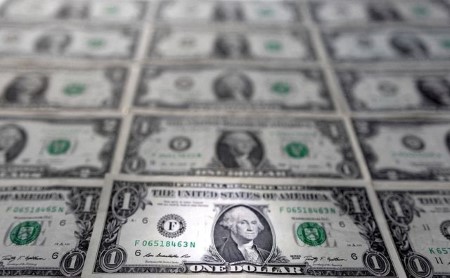




Philippines Trade Update: Trade trajectories trend along
 DOWNLOAD
DOWNLOAD

Policy Rate Updates: Double cut finale
 DOWNLOAD
DOWNLOAD

Monthly Economic Update: One for the road
 DOWNLOAD
DOWNLOAD


US recap: Dash for safety sends EUR/USD tumbling toward parity

July 11 (Reuters) – The dollar rallied on Monday on a wave of global risk-aversion brought on by renewed China lockdown fears, anxiousness regarding Western Europe’s energy supplies and fallout from accelerated Fed rate-hike pricing.
EUR/USD fell 1.2% to new 20-year lows close to parity on fears that a July 11-21 maintenance shutdown of the biggest single pipeline carrying Russian gas to Germany, Nord Stream 1, might be extended due the war in Ukraine.
With ECB yet to hike rates and the Fed seen doing back-to-back 75bp rate hikes, EUR/USD support at parity may prove short-lived, opening a door to support at 0.9625/595, particularly if this week’s US inflation and retail sales data reinforce the Fed’s aggressive rate hikes.
Overnight reports of broadening Chinese COVID restrictions gave the dollar its initial boost, weighed on commodities prices and sent USD/CNH 0.5% higher.
Sterling fell 1% to its lowest since early 2020’s pandemic plunge lows, as the brief relief rally following Prime Minister Boris Johnson’s announcement that he planned to resign just offered up better levels to sell.
Bank of England Governor Andrew Bailey said he thought the BoE’s most recent forecast for inflation, showing it was likely to fall sharply next year, remained valid. His other comments suggested not wanting to pre-commit to specific rate hikes, with the market now pricing in a 68% chance of the 50bp hike on Aug. 4.
The BoE, like many other central banks, faces rising imported inflation risk due to the dollar gains, while fearing rate hikes to defend the pound and fight inflation will simply heap more troubles on the economy.
USD/JPY gained 0.9% and hit a new 24-year high at 137.75 on EBS, as demand for the haven dollar outmatched demand for the haven yen.
If COVID-related disruptions in China — Japan’s biggest trading partner — persist, Japan’s economy could struggle more, keeping the BOJ’s ultra-loose policy in place.
For now, USD/JPY looks set to test resistance at 138.62 and near 139 if this week’s US data meet or beat forecast.
AUD/USD and the Canadian dollar fell 1.6% and 0.25%, respectively, with the Canadian dollar trading much more like the US dollar and Aussie having finally broken recent lows and major supports.
Bitcoin and ether’s modest losses almost looked like a victory given broader derisking.
On the US data front, Monday’s New York Fed consumer survey tended to reinforce market pricing in fed funds peaking by Q1 and falling thereafter. Wednesday’s CPI and Friday’s retail sales are the next major releases.
(Editing by Burton Frierson; Randolph Donney is a Reuters market analyst. The views expressed are his own.)
This article originally appeared on reuters.com





 By Reuters
By Reuters